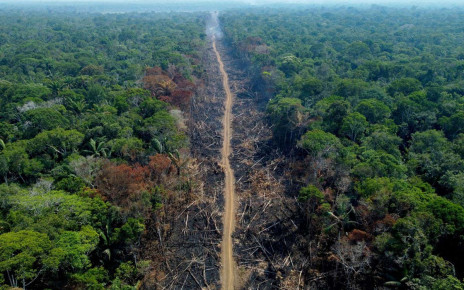[ad_1]
Fossils show plants were producing higher levels of sunscreen chemicals to protect against higher ultraviolet light levels at the end of the Permian period
Life
6 January 2023
The ozone layer in the atmosphere shields Earth from ultraviolet rays Shutterstock/studio23
It has long been suspected that the ozone layer high in the atmosphere that protects life from ultraviolet light was largely destroyed during the mass extinction at the end of the Permian period 250 million years ago. Now, we have the first direct evidence of that.
Phil Jardine at the University of Münster in Germany and his colleagues have shown that pollen grains and spores from this time contain higher levels of “sunscreen” chemicals than those from earlier or later periods.
“We only see this at one point, and that coincides with the end-Permian extinction,” says Jardine.
Around 90 per cent of marine species and 70 per cent of land ones died out at the end of Permian. The Great Dying, as some call it, is thought to have been caused by a period of unusually high volcanic activity. The lava flows heated up other rocks, including coal, releasing huge quantities of gases such as carbon dioxide. This led to ocean acidification and global warming, which in turn led to low oxygen levels in the oceans.
This explains why marine life was so hard hit, but it is less clear why so many terrestrial species also died out. One possibility is that halocarbons released by the eruptions destroyed the ozone layer in the same way as the chlorofluorocarbons (CFCs) used as refrigerants in the 20th century did, resulting in high levels of harmful ultraviolet (UV) light.
Previous studies have shown there was an increase in abnormally shaped pollen grains and spores at this time, which could be due to mutations caused by UV rays. But these abnormalities could also be a result of the many other toxic substances released during the eruptions, says Jardine.
An Alisporites pollen grain from one of the samples analysed in the study Feng Lui
So his team used a technique called Fourier transform infrared microspectroscopy to measure the levels of UV-absorbing chemicals in fossilised pollen grains and spores from rocks in Tibet. The oldest rock layers were deposited a few hundred thousand years before the extinction, and the youngest a few hundred thousand years afterwards, says Jardine.
The level of preservation of the sunscreen chemicals should be similar throughout this rock sequence, so the increase at the time of the mass extinction must be because plants were producing more of them, he says. “This is the UV signal.”
Higher UV levels would have decreased the growth of plants on land, leading to cascading effects on ecosystems as herbivores and predators starved. The effects on marine environments would have been much smaller because water blocks UV.
The same thing would be happening again today if countries hadn’t agreed to phase out CFCs under the Montreal protocol in 1987.
“Modelling studies suggest that by the 2060s, had we not had the Montreal protocol, we would have enormous ozone disruption and collapse,” says Jardine. “Hopefully, we have avoided that. These kinds of agreements and environmental protections really do matter.”
Journal reference: Science Advances, DOI: 10.1126/sciadv.abo6102
More on these topics:
[ad_2]
Source link




